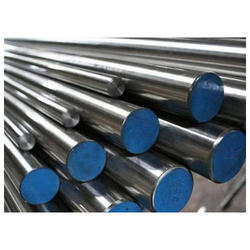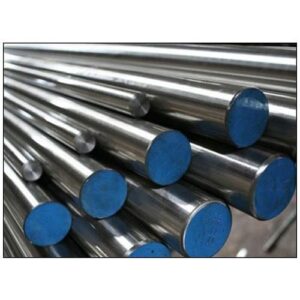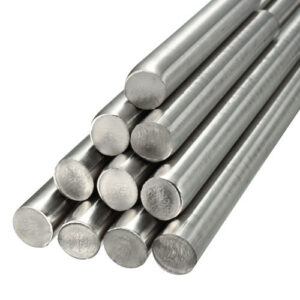Chemical Analysis :
- In order to ensure the material of the specimen is done with help of the optical emission spectroscope (OES).
- The result is obtain from the chemical analysis, carbon – 0.171 %, silicon – 0.3 %, manganese – 0.56 %, phosphorus – 0.012 %, sulphur – 0.13 %, Chromium – 0.953 %, Nickel – 0.989 %, molybdenum – 0.16 % and remaining percentage is iron respectively.
- A sample of 30 × 10 mm is polished using 60 grit papers and two sparks is introduced on the surface to find the chemical composition of the material.
- After ensuring the chemical composition, the raw material is machined according to the dimension for various tests [3]
Application:
- Machining components, Gears.
Hardness:
- Vickers hardness measurement is done on the specimen as per the IS 1501-2002 procedures by using Vickers hardness tester (MH6).
- Hardness measurement is made with 200 g loads, dwell time of 10 seconds and diamond indenter is used for test.
- The impression is done on the circular faces at the centre of the specimen.
- The hardness values are taken corresponding to the diagonal length of the indentation.
- Two samples (i.e. BHT and AHT) and five readings are taken from the each sample from case to core.
- The average value is calculated from five readings.
- The hardness values of BHT (case and core) samples are, 193.7 and 201.8 HV respectively.
- The hardness values of AHT (case and core) samples are 684.5 and 387.8 HV respectively. It is clearly noticed that the base material (BHT) has the low hardness.
Analysis:
- X-Ray Diffractometer is one of the most powerful techniques for material structural analysis.
- Bruker AXS D8 Advance X-Ray diffractometer fit with vertical goniometers, low and high temperature attachment.
- The angle range is 360°, the maximum usable angular is 3° to 135° and wavelength is 1.5406 Å. X-ray diffraction analysis is carried out under the following condition: Cu radiation, 40 KV voltage, 35 mA current and maximum angular speed 30°/s.
Heat treatment Procedure for EN353:
- CARBURISING Pack, salt or gas carburize at 910C, holding for sufficient time to develop the required case depth and carbon content, Slow cool from carburizing temperature and re-heat to 870C, hold until temperature is uniform throughout the section, quench as required in water, oil or air cool.
Tempering:
- Re-heat to 780C – 820C, hold until temperature is uniform throughout the section, and quench in oil,Temper immediately while still hand warm. Heat to 150C – 200C as required, Soak for 1 – 2 hours per 25mm of section, and cool in still air.
Chemical composition:
| Grade | Min | Max |
|---|---|---|
| Carbon, C | -.– | 0.20% |
| Manganese, Mn | 0.50 | 1.0% |
| Silicon, Si | -.– | 0.35% |
| Nickel, Ni | 1.0 | 1.5% |
| Molybdenum, Mo | 0.08 | 0.15% |
| Chromium,Cr | 0.75 | 1.25% |
| Sulfur, S | -.– | 0.05% |
| Phosphorous, P | -.– | 0.05% |





